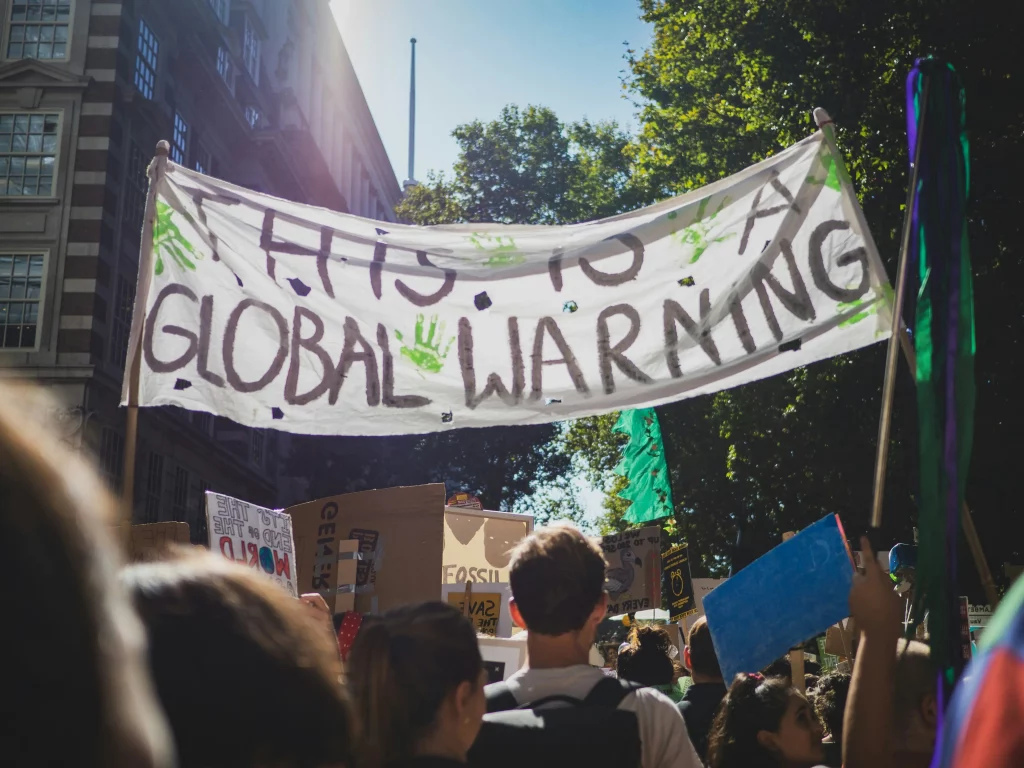|
Getting your Trinity Audio player ready...
|
Why Climate Agreements Fail Without Local Languages exposes a critical flaw in global climate action. Policies can’t work if people can’t understand them.
Even the strongest agreements, from the Paris Agreement to national adaptation plans, collapse. When warnings, guidance, and strategies are in languages that communities don’t speak.
Local and Indigenous languages carry the ecological knowledge. They also share the cultural context and the trust needed to turn policy into action. Climate messages get lost, participation drops, and solutions fail on the ground. With them, communities engage, adapt faster, and make climate plans actually work.
What are the climate agreements?
Climate agreements are international commitments where countries come together. This is to tackle global warming, reduce emissions, and protect vulnerable communities.
The most well-known is the Paris Agreement. Nations pledged to limit global temperature rise and build resilience to climate impacts. Others, such as the Kyoto Protocol, COP outcomes, and regional adaptation plans, work toward similar goals.
What is the significance of the climate agreements?
Their significance lies in scale and coordination. No single country can solve the climate crisis alone.
These agreements:
- set shared targets
- unlock funding for adaptation
- loss and damage
- guide renewable-energy transitions
- create accountability for governments.
When implemented well, they shape national climate laws. They protect ecosystems and support communities on the front lines of droughts, rising seas, and extreme weather.
The role of language in communication and understanding
Language is the bridge that turns policy into action. It shapes how people interpret information, make decisions, and respond to warnings. Climate messages are delivered in a language people don’t fully understand. The gap isn’t just linguistic. It becomes a barrier to safety, participation, and trust.
Frontline and Indigenous communities, local languages carry cultural meanings, environmental knowledge, and ways of interpreting the landscape that global frameworks often overlook.
Communicating climate risks in these languages ensures that guidance is clear. Warnings are understood, and solutions make sense in the context of people’s lives.

The Importance of Local Languages in Climate Communication
Local languages sit at the heart of effective climate action. They connect global policies to the realities of everyday life.
Warnings. Adaptation plans. Sustainability initiatives. They are all communicated in the languages people actually speak at home. The message becomes clearer, more trusted, and far more likely to inspire action.
What are local languages and their cultural significance?
Local languages are the everyday languages spoken within communities. Often, Indigenous, regional, or minority tongues carry generations of knowledge, identity, and tradition.
Local languages, people pass down farming techniques, water management practices, seasonal indicators, and spiritual relationships with the land. Climate information is shared in these languages. It connects with people’s lived reality rather than feeling like an external directive.
How language shapes people’s understanding of climate issues
Language influences how individuals interpret warnings, risks, and scientific concepts. For many communities, climate ideas such as “adaptation,” “resilience,” or “mitigation” have no direct equivalents. In the national or colonial language.
They often have centuries-old concepts expressed naturally in their own tongue. Communicating in local languages allows climate messages to align. This is with cultural values, traditional ecological knowledge, and community decision-making processes.
Examples of effective climate communication delivered in local languages
Across the world, climate success stories emerge when information is shared. In the languages people actually use:
- Vanuatu: Cyclone warnings delivered in Bislama and local Indigenous languages. They led to faster community evacuations and dramatically reduced casualties.
- Peru and Bolivia: Climate-resilient farming training in Quechua and Aymara. They helped Andean farmers adapt to shifting rainfall patterns and protect native crops.
- Kenya: Drought alerts issued in Maa for Maasai communities. They improved water management and reduced livestock losses.
- Alaska: Sea-ice safety guidance translated into Iñupiaq. This allowed hunters to navigate unstable ice conditions more safely.
- India: Flood preparedness campaigns in Assamese and Bengali. This increased community response rates and saved lives during monsoon seasons.

Barriers to Effective Climate Action
When policies are drafted far from the realities of local life. They are often in technical, national, or international languages. Crucial details get lost, misunderstood, or ignored.
These gaps reveal why meaningful climate action requires more than good intentions. It requires communication that people can actually use.
Misinterpretation of climate policies due to language barriers
Climate policies are written or delivered only in national or technical languages. Communities often misunderstand key instructions.
Terms like “carbon neutrality,” “restoration,” or “adaptation planning” may have no clear equivalent in many local languages. Leading to confusion about what actions are required.
This miscommunication can delay evacuations. It can hinder sustainable land-use practices or cause vital resources to be used incorrectly. Not because communities lack knowledge. But the message never reached them in a meaningful way.
The disconnect between policymakers and local communities
Many climate decisions are made in global or national forums. They are far removed from the people most affected. This can be by rising seas, droughts, or extreme weather.
Policymakers do not consider local languages. They create strategies that look effective on paper but fail in practice.
Communities may:
- feel excluded
- distrust government initiatives,
- reject programmes that don’t reflect local realities or traditional knowledge.
Case studies illustrating failures linked to inadequate language inclusion
Real-world examples show how the absence of local languages. They can derail well-intentioned climate efforts:
- Mozambique: Cyclone Idai, warnings delivered in Portuguese. They failed to reach rural communities that spoke Sena and Ndau. Contributing to higher casualties.
- Bangladesh: Early climate-resilient farming programmes struggled. This is because instructions were issued in formal Bengali. Rather than local dialects, this leads to poor adoption of new techniques.
- Northern Canada: Wildlife adaptation plans written only in English were rejected by Inuit communities. They argued the documents ignored Inuktitut terminology essential for understanding local ice conditions.
- Papua New Guinea: Deforestation-prevention policies failed when villagers, unfamiliar with the English-language contracts. Unknowingly signed away land rights meant for conservation.
The Role of Indigenous Knowledge
Indigenous knowledge offers time-tested insights. This is into weather, land, and biodiversity that modern policy often misses.
Shared and preserved through Indigenous languages. This knowledge becomes a powerful asset for climate adaptation. Grounding solutions in the lived experience of the communities closest to the land.
Importance of indigenous languages in preserving traditional ecological knowledge
Indigenous languages are vessels of ecological intelligence that have been refined over centuries. Within them live precise terms for seasons, soil types, plant behaviour, animal migrations, and weather patterns that often have no direct equivalent. In national or scientific languages.
When an Indigenous language fades, this knowledge risks disappearing with it. Preserving these languages means preserving the environmental wisdom. Many climate scientists now rely on it to understand local ecosystems.
How local languages can strengthen climate resilience strategies
Climate resilience becomes far stronger. This is when communities can use their own languages. Used to interpret risks, share observations, and maintain traditional practices.
Local languages allow people to communicate warnings quickly. They describe environmental changes accurately. Adapt strategies in ways that align with cultural values.
Whether it’s predicting rainfall from natural signals, managing water resources, or protecting biodiversity. Resilience grows when climate solutions are built. This is on the linguistic foundations that communities already trust.
Engaging Local Communities
Local communities live with the daily realities of climate change. Which is why their involvement is essential for any agreement to succeed.
Communicating in local languages ensures people understand the risks clearly. Trust the guidance, and feel ownership over the solutions.
Why community involvement is essential for successful climate agreements
When communities are part of the process, climate strategies become grounded in real experience.
Their local knowledge, observations, and priorities make policies more accurate and far more likely to be carried out.
Strategies for incorporating local languages into climate education
Climate education works best when it speaks the language of the people. Translating materials, training local facilitators, using community radio, and creating school or village workshops in local languages help information reach everyone. Making sure complex ideas are easier to act on.
Benefits of grassroots movements in climate action
Grassroots movements turn awareness into action.
When led in local languages, they mobilise neighbours, build trust, and push climate solutions that reflect cultural values and community needs, driving change from the ground up.
The Impact of Globalisation on Local Languages
Globalisation has accelerated the spread of dominant languages like English, Spanish, and French.
It has also pushed thousands of local languages to the margins. Younger generations shift toward global languages for work, school, and media. The linguistic threads that connect communities to their land and traditional knowledge begin to unravel.
The erosion of local languages in the face of dominant global languages
When global languages take over, local languages lose status, speakers, and visibility. This erosion weakens cultural identity. It breaks the chain of ecological knowledge passed down. This is through Indigenous and rural communities.
Consequences for climate communication and local engagement
Climate messages are delivered only in dominant languages. They rarely reach those who live closest to environmental change.
Misunderstandings grow, warnings go unheeded, and communities feel excluded from decisions that directly affect them. Without language inclusion, engagement drops and climate action stalls.
The need to preserve languages within climate discourse
To create climate strategies that work, local languages must be part of the conversation.
Preserving them isn’t just cultural protection. It’s a practical necessity. These languages in climate policy, education, and community outreach ensure information lands. Ensuring it is clear and respectful, and in ways people can act on.
Policy Recommendations
Effective climate action depends on policies that people can actually understand and use. Integrating local languages into climate agreements is a practical requirement for real-world impact.
Strategies for integrating local languages into climate agreements
Climate agreements should mandate translation. Into local and Indigenous languages at every stage – from risk assessments to adaptation plans.
Governments and NGOs can embed language inclusion into policy frameworks. They can fund community translators. Ensuring that communication materials reflect the linguistic reality of the regions they target.
Importance of multilingual resources and training for stakeholders
Policymakers, field workers, and climate educators need multilingual tools to work effectively.
Providing training in local languages, developing clear visual materials, and equipping frontline staff with relevant terminology. This ensures guidance is understood and applied correctly across diverse communities.
Encouraging collaboration between local communities and policymakers
Stronger partnerships between policymakers and local communities. This can lead to smarter, more grounded climate action. Consultation sessions in local languages, community-led translation groups, and shared decision-making processes help bridge gaps in trust.
When communities help shape the message, the policies stand a far better chance of succeeding.
FAQs for Climate Agreements Without Local Languages
Why do climate agreements fail without local languages?
Climate agreements often fail without local languages because communities cannot act on policies they don’t fully understand. Without clear communication, warnings are missed, participation drops, and adaptation plans break down on the ground.
How do local languages strengthen climate action?
Local languages make climate guidance more accurate and culturally relevant. They help people interpret risks, apply adaptation strategies, and trust the messages coming from governments and NGOs.
What role do Indigenous languages play in climate resilience?
Indigenous languages preserve ecological knowledge passed down over generations, seasonal patterns, land management practices, and environmental indicators, making them essential for effective climate planning.
What are examples of climate communication working better in local languages?
Successes include cyclone alerts in Bislama in Vanuatu, drought warnings in Maa in Kenya, and climate-resilient farming training in Quechua and Aymara in the Andes. all of which improved community response and safety.
How can policymakers include local languages in climate agreements?
Policymakers can mandate translation, train local-language facilitators, fund community translators, and work directly with Indigenous speakers to ensure climate guidance is clear, trusted, and actionable.

